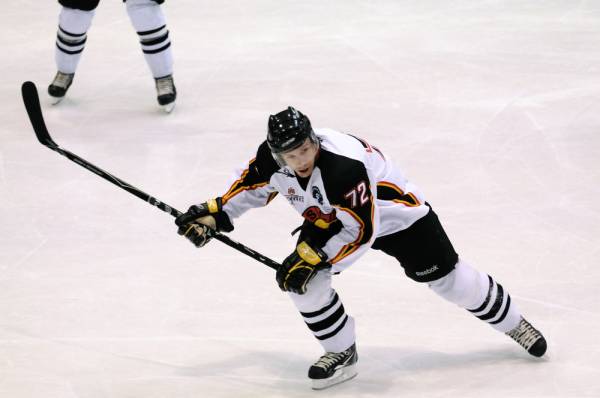If you are a hockey player, then you have found there are plenty of theories and opinions out there telling you the best way to improve your shot power.
Some of them include needing big arms and shoulders or say that stick speed is the difference maker, but the one theory that seems to stand out more than others is wrist strength.
Contrary to popular theory, I believe that although wrist strength plays a part in shot power, it’s definitely not the most important.
If you are a hockey player, then you have found there are plenty of theories and opinions out there telling you the best way to improve your shot power.
Some of them include needing big arms and shoulders or say that stick speed is the difference maker, but the one theory that seems to stand out more than others is wrist strength.
Contrary to popular theory, I believe that although wrist strength plays a part in shot power, it’s definitely not the most important.
Think about the size of the musculature in your forearms. It’s a fairly small muscle group compared to other sections of your body. Not only that, but if you think about where the shot power is generated from and not where it ends, you’ll begin to realize wrist strength is only a very small piece of the puzzle.
So where does shot power generate from? The beginning point from which a player begins to ready him- or herself for a shot is when they brace the legs, then the core, and start to transfer power through the hips. That’s your answer. Shot power comes from the core and the hips.
Let’s go back and compare the amount of musculature in the forearms compared to that of the core and hips. We’re talking about a big difference here.
So stop doing a million wrist curls every workout. Your forearms will always get a great workout when you’re using compound exercises in your training, like pull ups, rows, deadlifts, presses, and any other exercise where you have to grip a dumbbell or a bar.
If you want to increase your shot power, the first thing you need to do is start concentrating your training on where it needs to be, which is the legs, hips, and core.
Legs
For your legs, I find the most beneficial exercises for developing strength are squats and lunges.
My favorite type of squat is the box squat, as I try to teach it to my athletes first when learning proper technique. The reason is the box squat gives the athletes an idea of how to hinge at the hips when they have to sit back to a box. I coach them to be explosive once they first touch the box.
Another great exercise for the legs is the Bulgarian split squat. When an athlete uses heavy dumbbells to challenge him- or herself in this exercise it can reap huge benefits.
The obvious benefit is that it’s going to increase strength. The second benefit is that since it’s a single leg exercise, the rest of your body, your core in particular, has to work much harder, therefore increasing strength elsewhere in the body.

Hips
For the hips, the best exercise out there for increasing strength is the deadlift.
This exercise’s main focus is increasing strength in the hip extensors, which are the hamstrings, glutes, and lower back. To be successful with this exercise, however, you need to tighten up your core all over.
This exercise also transfers over to the ice very well because with any shot, whether it is a wrist shot, snap shot, or slap shot, you need to drive your hips forward to generate power. The deadlift covers that perfectly.
Core
The core is the last large muscle group that initiates power in a shot. Doing a bunch of crunches won’t exactly transfer over well to the ice, however, so you need to think about how the core is involved in a shot – while the hips drive forward your core is twisting. We can use that knowledge to better plan our exercises.
The absolute best way to challenge your core while rotating is by using medicine ball tosses or wall tosses.
What you’ll do is grab a medicine ball, stand about ten feet from a wall, start with the ball just above the hip on one side, and drive the ball at the wall pushing with the hand on that side. This exercise mimics a shot so well, that we’d be silly not to include it in programs for hockey players.
Conclusion
The next time you’re in the gym or looking over your program, look to see what types of exercises you’re including and ask yourself if they will help increase your shot power.
If you’re focusing on wrist strength and doing a bunch of wrist curls, your best bet is rethink how a shot is actually taken and where power in your shot is generated.
The legs, hips, and core are exactly where the shot begins, so focus on getting those parts stronger and your shot will be raising eyebrows in no time.
Photos courtesy of Shutterstock.






